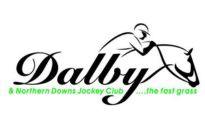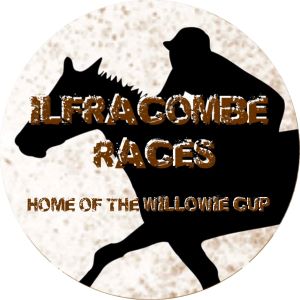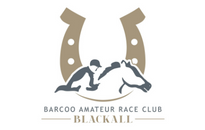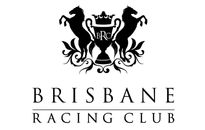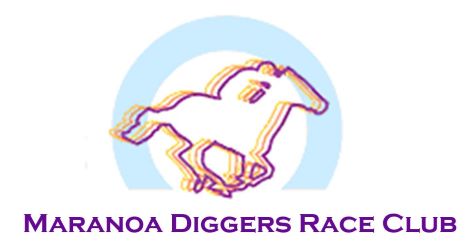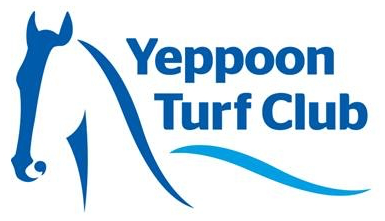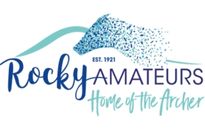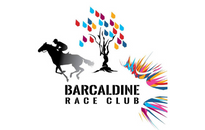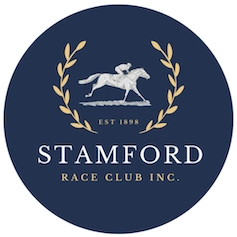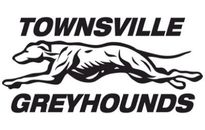
In the shadows of the post

By Ross Stanley
Spotlighting the evolving phenomenon of jargon.
Some racing terminology has been and gone. Some aspects have stood the test of time. Some are relatively recent creations. Below is an alphabet soup made from tasty morsels.
The word AMATEUR remains in the title of 14 of today’s 116 Queensland thoroughbred race clubs. The figure stood at 59 out of 188 in the 1963 Queensland Totalisator Administration Board (TAB) Annual Report.
While a number closed down, others made alterations. For example, the Ipswich Amateur Turf Club has changed to Ipswich Turf Club.
The Brisbane Amateur Turf Club, the buyer of Albion Park in 1924, became the Brisbane Turf Club before its merger in 2009 with the Queensland Turf Club to create the present day Brisbane Racing Club.
Amateur has two connotations here. It expressed the voluntary nature of the committee members when compared with the profit-making ambitions of the likes of Albion Park’s previous principal John Wren.
Also, it could apply to amateur riders. Clubs catering for the unpaid, heavyweight jockeys often were designated as “Picnic”.
A case in point is the Burrandowan Picnic Race Club near Kingaroy. Its inaugural meeting was staged in 1922. Eligibility was limited to grass-fed horses, that had been paddocked under supervision for a month prior to raceday. Owners and riders had to be club members.
The club opened up to professional jockeys in 1987. Although amateurs were not banned, the significant drop in the minimum weight dried up their opportunities.
Remnants remain in the south. For example, the Healesville Amateur Race Club maintains the old programming with the prefixes Mr and Ms signifying the jockeys’ amateur status.
BAGMEN are now almost extinct. The word was a general name for racecourse bookmakers.
In the days of yore, a bagman stood on the ground at the front of the bookmakers’ stand to take the cash. The boss wrote the ticket and called out the horse’s name and the details of the bet. The penciller recorded the transaction in a large ledger. There were one or two bagmen at the back to handle pay-outs.
Because they were quick calculators, bank tellers were often the Saturday pencillers. They made the bookie aware of his liability levels. Today the processes are computerised.
COCKNEY slang has disappeared from the track. Earlier, a punter could be “off to the Russell Maddock at the airs and graces with the cheese and kisses (or the trouble and strife)”. The phraseology, that includes the name of a famous Queensland hoop, translates as “going to the paddock at the races with the wife”.
When the British Empire controlled India in the 19th century, the 500 rupee banknote had a monkey on it and the one for 25 rupee featured a pony. It is thought that the currency was a source of the betting nomenclature of a monkey (£500) and a pony (£25) that emerged when soldiers returned to Britain from the subcontinent.
While DISTANCE naturally refers to the length of a contest, it was also a marker about 240 yards before the finish in the formative period when up to three heats were conducted to determine the outcome.
Any horse that had not reached that point before the first galloper passed the post was said to be “distanced” and was eliminated. This prevented a rider giving his mount an easy run and so save energy for later run offs.
EMUS and DIPS have gone out of business.
The former specialised in picking up prematurely or accidentally discarded betting tickets in the hope that they were winning ones.
There was a better chance of success if a protest was upheld and the punter had tossed away the slip without waiting for Correct Weight (or these days, the All Clear) to be announced.Dips had criminal intent. They deftly picked pockets in the tightly crowded betting rings, particularly after observing someone receiving a significant pay out.
FARRIERS are vital cogs in the equine wheel.
There is always one at the start at important tracks in case a shoe has shifted.
While a blacksmith makes objects out of iron by hot and cold forging on an anvil, a farrier goes further by removing and replacing shoes on horses.
A black oxide forms on iron in the fire and so the notion of “black metal” explains the derivation of “blacksmith”. Farrier comes from ferrum, the Latin word for iron.
The shoeing process is painless because the hoof is tough and nerveless.

GELDING apparently is a 14th century word from the Old Norse term “geldr” meaning barren.
It means “castrated horse”. Barrow is the counterpart for a pig, steer or bullock for a bull, capon for rooster and wether for ram.
A rig is a male horse that is carrying either one or two testicles concealed in its body, making it visually appear to be a gelding, while behaving like a stallion. Such horses are described as a cryptorchid, literally meaning “hidden testicle”.
Intact horses are colts until they turn four. They are then called entires (particularly if still racing) or stallions.
Reasons for the gelding of horses include easier management, reduced aggression, more focused outlook, less distraction in breeding season and potential weight loss to assist soundness.
The superstar Kingston Town ran last at his debut at two in March 1979. He was gelded and saluted at 33/1 at his next start later in the season. The son of Bletchingly posted a career line of 41: 30-5-2 embraced 17 Group 1s, including three Cox Plates.
HANDS DOWN is an expression that goes back to the mid-1800s. When very confident of success, the rider would loosen his grip on the reins and drop his hands. This would happen approaching the finish or “within the shadows of the post”.
The usage has broadened to convey the ideas of “easily done” or “without a doubt”.
INSIDE OIL refers to the innermost information about a galloper’s prospects.
Everything was hushed up and kept under wraps. It was a cloak-and-dagger manoeuvre and no one was to be given the drum. The horse in question could be an unraced “smokey”.
Back in the days when much poorer prizes were on offer, money had to be made by setting the conveyance for a particular race at the best possible odds.
There was a quaint, honourable courtesy extended sometimes by those who may have heard a whisper. They would wait until the stable cash went on before making their move.
On the other side of the equation, bookmakers were said to have a “secret service” that could tip them off about those unwanted scenarios.
The JOCKEY CLUB kicked off in 1750 in London. It was synonymous with the nation’s administration of racing for centuries. Its controlling role seemed likely to be an eternal one. Racing bodies in Australia’s embryonic era sought rulings on disputed matters from this august group.
In 1964, the organisation took up the ownership of racecourses in the United Kingdom. This action expanded and commercial pursuits are now its major undertaking. The present total is 15.
After further structural rearrangements, the British Horseracing Authority became the central powerhouse in 2007.
KNIGHTS OF THE PIGSKIN refers to jockeys because some saddles were made from pigskin leather.
A few weeks prior to the 1953 Epsom Derby, Queen Elizabeth II conferred a knighthood on Gordon Richards, the 26 times British flat racing champion jockey.
On receiving the honour, Richards seemingly quipped that he never dreamed he’d end up being the shortest knight of the year.
Her Majesty’s 1953 Derby hopeful, Aureole, was the closest chaser to Richards on Pinza at the classic’s conclusion.
LIVERY was a special uniform worn by servants or staff to denote ownership.
Early on in England, when a groom or stable hand rode a racehorse he would wear livery that was related to the owner’s heraldic coat of arms.
Initially, the designs on racing colours were simple geometric shapes. The range has really expanded with logos and illustrations now included as are blinkers that match the jacket.
For promotional purposes, the stable is often identified on the hood in some way.
Although silk was an early fabric of choice, lycra, synthetics, polyester satin and ultra lightweight materials are some of today’s alternatives.

MOBILE was the adjective that preceded the words “barrier stalls” when the modern moveable starting machine was introduced to Australia in the post-war years.
When the initial starting aid was simply a flag, despatches were riddled with false starts. If anything goes wrong in contemporary times, the starter can activate a signal set up around 100m ahead so that it can be easily seen by jockeys. There is no indecision and mounts are eased up immediately.
The 1984 Missile Stakes at Rosehill was quite a debacle. The mobile stalls became bogged in the chute and so the start had to be made on the course proper. Rather than take out two runners so a smaller set could be employed, a flag start was somewhat shakily executed.
Peter Miers, on the rank outsider Plus Vite, had experienced this method in Northern England. He got the drop on his rivals and led all the way on the debutant grey that was being set for a provincial maiden.
The fact that favourite Pashenka’s Gem ran 10th was a red rag to a bull for racegoers. A prolonged demonstration ensued. Officials were ruefully red faced. Plus Vite, which is French for faster, was Bart Cummings’ second stringer and so sported red sleeves.
NEWMARKET is both a foremost and an historic racecourse near Cambridge in England.
King Charles II (1630-1685) was an avid player there and frequently viewed the workouts on Warren Hill from the back of his hack Old Rowley.
Action at Newmarket is held on the July Course and the Rowley Mile. The Cesarewitch Handicap (2m 2f) is unusual in that it is run on a one bend elbow course that commences in Cambridgeshire, ends in Suffolk and has a straight 10 furlong run in.
The highlight of Doomben’s opening chapter in 1933 was a Newmarket Handicap that began as a straight six furlongs competition. Melbourne’s time honoured VRC Newmarket Handicap is similar in layout and length.
Rockhampton, Bundaberg, Blackall, Charleville, Dalby and Cairns are some of the Queensland venues that program a Newmarket. The Gold Coast cleverly tweaked its Newmarket into a Goldmarket.
The OFF side is on the right of the horse. Mounting, dismounting, saddling and bridling usually takes place on the near or left-hand side.
A theory is that the custom began when steeds were ridden in battles. A right-handed man carried his sword on his left side. He boarded on the near side so that the weapon wouldn't get in the way as he swung his leg across the horse. There were no stirrups in those early days, and so having a full range of movement to mount the horse was critical.
As far back as 360BC, Xenophon wrote in his On the Art of Horsemanship that a rider should be able to mount from either side.
“The soldier should be able to mount not only on the left side, but also on the right, so if he is leading the horse in his left hand and carrying his spear in his right he may quickly mount should the need arise.”
The off side is sometimes referred to as the “Indian side,” because early Native Americans mounted and dismounted from that direction.
The PHOTO FINISH was a welcome addition to the Australian scene.
In October 1948, the Queensland Guineas card at Eagle Farm utilised the facility.
Country areas and other sports also got on the bandwagon. A snippet in the Argus on April 7, 1948, indicated that the "magic eye" camera, which was used at the Stawell Gift athletics meeting, would be on trial at the upcoming Bacchus Marsh races.
The assistance in its first Melbourne Cup in 1948 proved controversial when the judge declared that Rimfire (Ray Neville, 80/1) had downed Dark Marne (Jack Thompson, 12/1) by a half-head.
The Age newspaper reported that “Rimfire won by a nostril. Angry punters on the track, convinced Dark Marne had won, booed the judge. J. Thompson, riding Dark Marne, claimed victory and always maintained that the camera was faulty”.
The process in the black and white film days was time consuming. There was a small dark room high in the tower. Informal betting on the outcome sometimes filled in the minutes needed to develop, print and assess the print.
Today’s computerised digital colour system is brilliantly fast and the software helps out promptly with margins and time.
There is a monitor that displays the image of the finish next to the scales at Doomben. If connections wish to query the call, the photograph is right there.
QUINELLA, this and the next doubles and win and place investments were the only constant offerings at the track before the TAB was in full swing.
Racegoers could go to the Doubles window and place a Forecast (now Exacta) on the last race on the card.
TAB trebles were initially only available off course. Bracketing was employed for tote betting on large fields. Aspalita (Number 24) and Miss Proud (24A) were the bottom pair in the 1965 Stradbroke Handicap. The Stable Entry was in force in the USA. For example, horses 1 and 1A were stablemates.
RING-IN is a label hopefully lost in the past. The pre-post identity checking methodology is sharper now than it was when in 1984 when Bold Personality was substituted for Fine Cotton at Eagle Farm, Nordica for Foden at Broken Hill in 1983 and Regal Vista, a Stradbroke runner-up, for Royal School at Casterton in 1972.
A case with most profound consequences was Frank Bach’s disqualification because of the four “Brulad for Daylate” ring-ins in 1940-41.
Although Bach claimed he had sold the foal that raced as Bernborough to Albert Hawden, the Queensland Turf Club did not accept it as genuine transaction.
In short, Bernborough’s first 20 starts were restricted to Toowoomba. After Sydney’s Azzalin Romano purchased the Queenslander, the bay, now a free agent, ran fourth in a Canterbury Flying, won 15 straight, was fifth in the 1946 Caulfield Cup and then broke down in the L.K.S. Mackinnon Stakes.
Conceivably, with a trifle more luck, he could have been unbeaten at those 18 appearances at six and seven. However, the principal pondering is over what the gelding could he have achieved if he had been permitted to appear outside Clifford Park during his first four seasons.
The SPORTSMAN was an institution that lasted for 123 years.
The Sydney-based national newspaper developed into being a highly comprehensive form guide. The data provided per horse easily surpassed the details contained in the lift-outs in the daily press in the pre-internet days.
In May this year, The Sportsman followed lamplighters, carbon paper and telegram boys into oblivion. It became a casualty of the technology that made comprehensive form accessible on numerous online sites.
Although Andrew Barton Paterson (1864-1941) is celebrated for works such Clancy of the Overflow in 1889,The Man from Snowy River (1890) and Waltzing Matilda (1895), his passion for racing has not been trumpeted.
At age eight, Paterson was smitten when a roustabout on his folk’s property took him to the Bogolong races. Around half-a-century later, he was editor of The Sportsman for a decade.
Verses written by Andrew’s father, Andrew Bogle Paterson, appeared in the Bulletin not long after its birth in 1880.The horse lover was also keen to be published in the popular weekly magazine. He feared rejection and so his submissions bore the pen name “The Banjo” which happened to be the name of a racehorse on his family’s station.
The ploy proved positive and “El Mahid to the Australian Troops” was in print in February 1885. Ahead lay a cavalcade of literary credits.
Paterson could be described as a dyed-in-the-wool Australian. While immersed at picnic race meetings and polo matches, he relished watching talented horsemen from the Murrumbidgee and the Snowy River districts.
“Banjo” was a fine polo player and rode at Sydney racetracks as an amateur.
He was a Boer War war correspondent and drove an Australian Voluntary Hospital ambulance in France during World War I.
Paterson made three voyages with horses to Africa, China and Egypt as an honorary vet and was a captain in the AIF’s 2nd Remount Unit.
Last century, sportsman was a synonym for a racehorse owner.

A TICKET IN TATTS referred to having a crack at a pioneering form of lottery.
George Adams, a name that was to become attached to that style of gambling, was born in 1839 in Hertfordshire. After gold was discovered Down Under, his father, William, opted to move the family to Sydney in 1855.
The sixteen-year-old George, endowed with an entrepreneurial outlook, was mighty adventuresome.
He went prospecting for gold in Queensland, drove a coach for Cobb and Co and worked as an apprentice butcher, saddler, baker and a confectioner. He part-owned a sheep station at Crookwell and was mine host at Kiama’s Steam Packet Hotel.
With support of friends, Adams took over the Tattersall’s Hotel, a central Sydney Mecca for bookmakers, punters and sportsmen and a host for lucrative sweeps.
The very mobile Adams went on to amass a fortune through his Tattersalls Sweeps and other business projects.
Melbourne racing honoured him with the naming of the VRC George Adams Handicap, an elite event originally known as the VRC Cantala Stakes.
Alligator Blood, Albert The Fat, Scenic Peak, Planet Ruler, Gunsynd, Cyron and Highland were victors with links to Queensland.
“A Ticket in Tatts was a 1934 racing themed musical comedy that starred the stage comedian George Wallace.
UPLIFTER is a term possibly waiting to be coined.
If you ask the talented staff who hoist jockeys into the saddle at Doomben or Eagle Farm what their job description is, the reply will be “ Barrier Attendant”.
After their parade ring chore has been completed, the pair bolt to the infield and travel out to the starting point.
The VIRUS known as COVID triggered the introduction of this practical strategy when social distancing was mandatory and limiting numbers of people in the parade ring was paramount. Although trainers traditionally legged their riders up, the new approach also increased the safety level. The innovation is now a permanent procedure.
Another strategy from the pandemic period that is still part of the landscape are the post-race interviews trainers recorded with jockeys. Owners were not permitted to attend so the forwarded segments were some compensation.
WATCHING and clocking fast morning trackwork on Tuesdays and Thursdays was once a crucial chore for some Brisbane newspaper turfmen.
The multi-skilled clockers used several stopwatches to time several horses concurrently in semi-darkness. The public service of publishing the recorded times has vanished and been replaced by the more sophisticated video coverage of track trials.
Arthur Thomas Davies, as Clarence the clocker, was a popular host of a Sydney-based racing program in the early days of black and white television.
His character was in Bing Crosby’s song “The Horse Told Me” in the 1949 movie "Riding High.”
The lyrics follow:
In the big handicap there's a positive snap.
Go bet on a horse called 'The Sheik.’
He'll walk off with the crown if he doesn't fall down,
And, my boy, that's what happened last week.
Oh, the owner told Clarence the clocker.
The clocker told jockey McGee.
The jockey, of course, passed it on to the horse.
And the horse told me.
X is the symbol usually inserted in the margins between the placegetters.
The decimal equivalent across the traditional nose, head and neck areas range from 0.05 length to 0.25 length. It then goes to a long neck and then half-a-length.
However, Racing Australia’s official results are now entirely decimalised and accumulative. The distances shown note how far the respective finishers were from the winner.
Given that betting odds such as evens, 2/1 and 8/1 are now $2, $3 and $9 respectively, it seems a matter of time before digits replace words in statements about margins.
The YANKEE is a long standing, pre-computer, exotic wager in Britain. It consists of four selections that are linked across four events to make six doubles, four trebles and one fourfold. At least two selections must be successful to guarantee a return.
Other types of accumulators are Heinz (57 separate bets from six picks) and a Goliath (eight selections for 247 separate bets—28 doubles, 56 trebles, 70 fourfolds, 56 fivefolds, 28 sixfolds, eight sevenfolds).
At the other extreme, Australians simply placing a win bet could say they want it “on the nose”.
A ZAC was the nickname for sixpence in Australian currency prior to 1966 when decimalisation was introduced.
After a poor performance a horse could be tagged as not being worth two bob (two shillings or 24 pence).
Melbourne’s Weekly Times in its report about the 1901 Cup Day mentioned that threepenny, sixpenny and shillings totes operated in the infield Flat. The entry fee for The Flat at Eagle Farm on Stradbroke Day 1965 was a shilling.
The rise and fall in the use of jargon provides a barometric reading of the reshaping of the turf world over time. Social, cultural, physical, financial and technical are some of the influences that make an impact. Language certainly adds flavour to racing’s realm.

